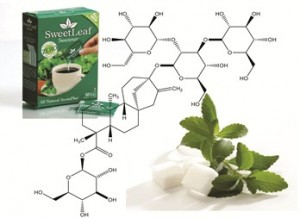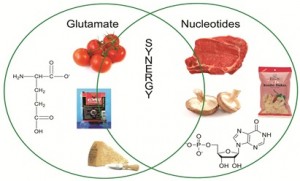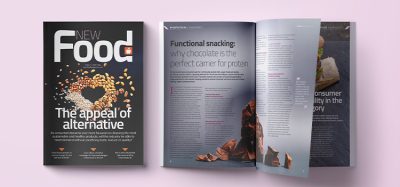Natural flavour ingredients
- Like
- Digg
- Del
- Tumblr
- VKontakte
- Buffer
- Love This
- Odnoklassniki
- Meneame
- Blogger
- Amazon
- Yahoo Mail
- Gmail
- AOL
- Newsvine
- HackerNews
- Evernote
- MySpace
- Mail.ru
- Viadeo
- Line
- Comments
- Yummly
- SMS
- Viber
- Telegram
- Subscribe
- Skype
- Facebook Messenger
- Kakao
- LiveJournal
- Yammer
- Edgar
- Fintel
- Mix
- Instapaper
- Copy Link
Posted: 28 February 2013 | Jane Parker, Flavour Centre, Reading University
The flavour of processed foods has changed significantly over the last 50 years. Think back to the days of the early stock cubes or the original powdered desserts which bore only a passing resemblance to the real flavour. Since then, the food industry has been involved in a continuous programme of flavour development, made possible by significant advances in chromatography and an increased understanding of the flavour chemistry involved. Flavour development was inspired in the 1970s and 1980s by increased foreign travel and a desire for the more exotic spices, but currently the major influence is the drive for healthy alternatives requiring reformulation of products to use less fat, less sugar and less salt. In addition, consumer pressure has led to the notion of ‘clean labels’, requiring retailers to remove MSG from products and use only natural or ‘store-cupboard’ ingredients.
The flavour of processed foods has changed significantly over the last 50 years. Think back to the days of the early stock cubes or the original powdered desserts which bore only a passing resemblance to the real flavour. Since then, the food industry has been involved in a continuous programme of flavour development, made possible by significant advances in chromatography and an increased understanding of the flavour chemistry involved. Flavour development was inspired in the 1970s and 1980s by increased foreign travel and a desire for the more exotic spices, but currently the major influence is the drive for healthy alternatives requiring reformulation of products to use less fat, less sugar and less salt. In addition, consumer pressure has led to the notion of ‘clean labels’, requiring retailers to remove MSG from products and use only natural or ‘store-cupboard’ ingredients.
The flavour of processed foods has changed significantly over the last 50 years. Think back to the days of the early stock cubes or the original powdered desserts which bore only a passing resemblance to the real flavour. Since then, the food industry has been involved in a continuous programme of flavour development, made possible by significant advances in chromatography and an increased understanding of the flavour chemistry involved. Flavour development was inspired in the 1970s and 1980s by increased foreign travel and a desire for the more exotic spices, but currently the major influence is the drive for healthy alternatives requiring reformulation of products to use less fat, less sugar and less salt. In addition, consumer pressure has led to the notion of ‘clean labels’, requiring retailers to remove MSG from products and use only natural or ‘store-cupboard’ ingredients.
In 2008, the EU regulations changed the definition of natural flavourings, placing yet more restrictions on what food companies could use to improve the flavour of their products, whilst maintaining their natural status. Thus, many of the ingredients that have been traditionally used to impart taste and flavour to processed products are in the process of being reduced or removed. This article gives an overview of the natural alternatives that are becoming available, considering both recent approaches to obtaining natural aroma compounds and innovative replacements for salt, sugar and MSG.
Natural aroma ingredients
The range of aroma ingredients available today reaches into the thousands. Many of these can be declared as natural, but regulations governing the natural status of flavouring substances vary around the world and are constantly revised and updated. The definition of natural is a complex issue and sometimes counter-intuitive. The aim of this article is not to dwell on legislation, so details of specific ingredients should be obtained from the relevant regional governing bodies. Worth mentioning, however, is Regulation (EC) No 1334/2008 which came into force in the EU in 2008. This gives three guiding principles on which to base the regulatory definition of natural: the compounds must have been found in nature, the material must originate from a food source and only traditional food preparation processes (which are listed) should have been used in its manufacture. The intricacies of these principals are discussed in more detail in a recent book entitled ‘Natural food additives, ingredients and flavourings’ by Baines and Seal[1]. However, these new regula – tions mean that thermal process flavourings, smoke flavourings and flavour precursors do not currently have natural status in the EU.
Essential oils
Essential oils such as those derived from citrus, mint, herbs and spices are a very common source of natural flavours widely used in the food industry. Soft drinks in particular create a huge demand for citrus oils. Millions of tonnes of citrus fruit are processed each year, providing the industry with a broad spectrum of essential oils including orange, lemon, lime, tangerine, mandarin and bergamot as well as the more obscure varieties. The citrus oils are extracted using specialised sfumatrice or pelatrice processes which crush the fruit, remove the solids and use centrifugation to obtain the oil. The oil can then be concentrated (or folded) and enriched using distillation or solvent extraction to obtain fractions with different flavour qualities ready for blending and application in many common food products, particularly beverages and confectionary. The cold-pressed oils are of considerably superior quality compared to the distilled oils, and are extracted by mechanical means alone, not being sub – jected to steam distillation. The difference, particularly in lime oils, is remarkable – the coldpressed oil producing a slightly spicy and coconut note more reminiscent of lime zest, and the distilled oils producing a harsher and fruity note typically encountered in limeflavoured confectionary. These cold-pressed oils are organoleptically closer to the fresh fruit, but they are obtained in exceptionally low yields: for example, 100 kilograms of oranges produces just 300 grams of cold-pressed oil (from the oil sacs in the flavedo (or peel)) and a further 10 grams of essence from the flesh. Spices tend to be extracted with a solvent to produce an oleoresin.


Rebaudoside A – major component of a group of compounds called steviol glycosides which are extracted from
the stevia plant (Stevia rebaudiana Bertoni) and typically used in drinks, dairy products and sweets
Aroma chemicals
Although essential oils are acceptable flavouring ingredients in their own right, they are rarely used in isolation and tend to be modified by the addition of single aroma chemicals or top-notes. Over 2,500 aroma chemicals exist on the market today. All but a handful have been found in nature, and can be termed (at least under US legislations) ‘nature- identical’. The most widely used exception, which has never been found in nature, is ethylvanillin. In the EU prior to 2008, these nature-identical compounds could be described as natural. To a flavour chemist, this makes eminent sense, since a molecule of vanillin is a molecule of vanillin, whether it has been obtained from a synthetic route based on petrochemicals (and passed thorough strict analytical and toxicological tests) or whether it has been obtained from organically grown Madagascan vanilla (V. Planifolia) (and not necessarily subjected to any testing whatsoever). However, the notion of natural from a consumer perspective is different and is based on the premise that natural compounds should have been derived from a natural source. This led to the new EU regulations which came into force in 2008. Since then, companies selling flavourings to the EU have been under pressure to provide natural alternatives to their natureidentical aroma compounds.
Many single aroma compounds can be distilled from essential oils: the fruity aldehydes, octanal and decanal are prime examples and are widely used in flavourings. Other examples, to name only a few, are cinnamaldehyde from cinnamon bark, eugenol from cloves and menthol from mint (mentha avensis). Note that synthetic routes to these compounds also exist and these may be cheaper, and even more sustainable. Extraction of menthol from mint is an exceptionally inefficient and low yielding process, and there are many alternative routes, both chemical and biochemical, which are more sustainable.
Under EU regulations, natural aroma compounds can be subjected to traditional processing techniques, which can be used to effect simple chemical reactions. This is particularly useful for the formation of natural esters which can be readily formed by heating together the parent acid and alcohol, readily obtained from natural sources. The slower of these esterification reactions can be catalysed by the addition of esterase, and still maintain the natural status. This provides a range of natural fruity esters for incorporation into beverages, confectionary and dairy products.
Essential oils and their components can also be used as the basis for biochemical trans – formation into other aroma compounds. These processes can be single enzyme catalysed reactions, for example esterification or oxidation, of which there are numerous examples used in the industry[2]. Limonene, which is a by-product of citrus oil production, can be converted with the appropriate biocatalyst into more high value natural aroma compounds such as a-terpineol (floral), perillyl alcohol (spicy, fruity) or carvone (caraway). The biotransformation of ferulic acid (from rice or oat bran) into vanillin is an important source of one of the world’s most popular flavours.
Microorganisms can be used to produce a wide range of flavour compounds, whether from yeasts used for fermentation processes or moulds such as those used for development of flavour in cheese or dry-cured meats. Although the major use of yeast is for the production of ethanol, a spectrum of other compounds is produced: branched chain alcohols such as 3-methylbutanol are particularly useful, once esterified, to produce fruity flavours. Yeast is also a natural source of pyrazines which impart toasty, biscuit notes, and β-damascenone can also be extracted from yeast.
The number of biochemical routes to aroma compounds has expanded exponentially over the last 20 years. The focus is now on the use of white biotechnology, using only ethically sourced renewable raw material, in low energy, ecologically sound processes.


Foods that are high in savoury character containing high levels of either glutamate or nucleotides. A combination
of the two produces a synergistic effect
Process reaction
No article on flavours is complete without the mention of process reaction flavours. They are the major source of savoury flavour in the food industry. They are based on the Mallard reaction and involve the reaction between an amino compound and a reducing sugar at normal cooking temperatures – again the legislation is complex and currently, in the EU, process flavours cannot be natural. This makes little sense, since the raw materials can be natural and the process is a traditional cooking process. However, in the US, so long as the raw materials are natural, process reactions can be declared as natural.
All manner of savoury flavours can be generated this way, with careful selection of the sugar, and particularly the amino acid, to give the desired character. Utilisation of leucine and isoleucine will produce malty (or chocolate flavours), methionine will give vegetable notes, and cysteine is essential for meaty notes. Natural sources of cysteine are hard to obtain, so most meaty process flavours, even in the US, cannot be labelled as natural. The roasted character can be obtained by increasing the pH towards pH 7-8, whereas many of the meaty sulphurcontaining compounds are generated preferentially at pH 4. The ideal pH, depending on the character required and the application, is somewhere between the two. The design of process reactions is an art, with other com – ponents being added to change the nuance from chicken to beef, or from a roast beef to a boiled beef. The complete process flavour will often have spices and taste components incorporated as well, often a yeast extract to provide a source of nucleotides.
Natural taste ingredients
Flavour, as perceived by the consumer, is a complex notion, influenced not only by aroma, but also by taste, texture and appearance (and many external influences beyond the scope of this article). It is important to consider that, in addition to the aromas detected by the nose, the perception of flavour is heavily influenced by tastants perceived by the tongue. Indeed, these two modes are inseparable, and there are well documented interactions between the two[3]. In this section, we will consider what alternative tastants may provide viable natural alternatives to sugar, salt and MSG.
Sugar alternatives
There are many compounds other than the common saccharides which taste sweet, but far fewer which are viable alternatives. These must be low calorie, soluble, stable and cost effective, but they must also pass stringent safety and toxicology tests. Furthermore, the character of the sweet taste can vary, as can the temporal profile, and many sweet compounds have bitter or metallic aftertastes. There are two types of low calorie sweeteners. The first is the group of bulk, low calorie sweeteners which have a potency similar to that of sugar. Examples in common use are erythritol (manufactured enzymatically using fungi) and tagatose (manufactured from lactose or galactose) which are used in confectionary and chewing gum. Note however that neither of these compounds is a reducing sugar, so they cannot participate in the Maillard reaction to produce cooked aroma notes.
The second is a group of high-potency sweeteners (HPS) which are generally plantderived. The HPS to receive most attention recently comprises a group of 10 compounds which are collectively known as steviol glycosides and are extracted from the stevia plant, Stevia rebaudiana Bertoni. They are 30 to 300 times more potent than sugar, and rebaudioside A is the most acceptable in terms of taste, stability and abundance, delivering a particularly long-lasting sweet taste. It is stable to typical baking conditions, and stable in yogurt, so it is typically used, often as a blend, in drinks, dairy products and sweets. Steviol glycosides have been permitted in Japan for some 30 years, but only permitted in certain foods in the UK since December 2011.
Another HPS is derived from the Lo han guo (LHG) or monk fruit. A group of triterpene glycosides provide the sweet character, with mogroside V being the most potent component. It has a juicy-fruit candy taste but the onset of the sweetness is slow. It is often used in conjunction with steviol glycosides which provide the more immediate sweet hit. The fruit has been used by the Chinese for centuries, but has only been permitted in the US in the last few years. Approval is currently being sought for its use as a sweetener in the EU.
Glycrrhizin is another naturally occurring triterpene glycoside with sweet properties, which is extracted from the liquorice plant (Glycyrrhiza glabara L.), and primarily used in liquorice or tobacco products since it also imparts a liquorice taste. Monatin, a relatively small molecule found in the root bark of Sclerochiton ilicifolius, is a high quality sweetener for which new chemical and biochemical routes are being sought.
A number of sweet-tasting proteins have been isolated. One of the sweetest of these is thaumatin, but because of its liquorice taste, it is used at low levels more as a flavour modifier, flavour enhancer or bitter suppressant. It is not heat stable and not generally approved for use in the UK or the US. Brazzein is the most stable of the sweet proteins and the most comparable to sucrose in terms of taste, however, extraction of brazzein from the berries of Pentadiplandra Brazzeana Baillon is expensive and not sustainable. Recent advances in bioprocessing may mean that production is more feasible and this product could join the steviol glycosides and LGH in the future as a commercial alternative to sugar or artificial sweeteners. Miraculin is an interesting glycoprotein extracted from the berries of Synsepalum dulcificum. It does not taste sweet, but can switch the taste of a beverage from sour to sweet if tasted prior to the beverage. Although sweet taste is perceived by the tongue, sweet aromas such as maltol and cyclotene can be used to give the impression of sweetness.
Salt replacements
In the UK, FSA targets for salt reduction are driving food companies to find alternative ways to maintain the desirable salty taste of products. It is generally agreed that no single approach has yet been identified and the way forward is the use of a combination of strategies. Some benefit can be gained from altering the physical properties of the salt, such as particle size, crystal structure or release properties. Some of the salt can be replaced with other minerals such as KCl, sodium lactate or mineral blends, but these are limited by their bitter taste. Incorporation of seaweed such as wild wrack provides a range of minerals and this species has been shown to maintain the salty taste in reduced sodium breads[4], however, is not yet in general.
One benefit of added salt is flavour enhancement and this can be achieved by alternative means, either by increasing the aroma compounds present, enhancing the flavour using taste enhancers or the addition of a congruent salty aroma such as sardine[5] or aroma compound such as sotolone[6], which gives the perception of a saltier product. This is known as odour-induced saltiness enhancement (OISE) and Takasago Int. Ltd hold a patent on a low molecular weight volatile compound extracted from kelp which enhances salty taste when applied to potato chips or cup noodles, (possibly further enhanced by the other non-volatile components of kelp). Another successful approach is use of repeat exposure, which is used in the industry and has been shown recently in a study to increase liking of reduced salt soups[7].
As far as finding natural alternatives, the choices are limited. Chromocell are currently screening natural compounds for the ability to boost salt taste by testing activity directly on naturally occurring single cell lines[8], and commercial products may emerge from this work. There are a few recent patents claiming salt enhancement, some purporting to be all round flavour enhancers increasing umami taste and having chemical properties not unrelated to the umami compounds discussed below. These patents are reviewed in Issue 2 of Flavour Horizons, 2012[9].
Umami tastants
The savoury or ‘umami’ taste is elicited by two naturally occurring amino acids: aspartic acid and glutamic acid (Glu is >10 times stronger than Asp) and also by a range of small peptides, most of which contain either the glutamate or the aspartate residues. With the drive to remove mono sodium glutamate (MSG) from label declarations, alternative natural sources of umami compounds are sought. Glutamate and aspartate are naturally abundant in many food products and reach levels in the region of one to two per cent in seaweed (dependent on the species and pre-and post harvest conditions), soy sauce, shitake mushrooms, parmegiano reggiano, fish sauce and yeast extract, and are relatively high in many other vegetables, especially mushrooms and tomatoes. They impart a savoury brothy note in savoury applications, but they also act synergistically, at receptor level[10], with a group of naturally occurring ribonucleotides. These are often referred to as ribotides or ‘I+G’ and comprise a group of six ribonucleotides, the two most active of which are 5’-guanosine mono phosphate (GMP) and 5’-inosine monophosphate (IMP). The addition of low levels of IMP can decrease the threshold of MSG by a factor of 60. IMP is typically present in meat and tuna at 0.1-0.2 per cent and GMP is found relatively abundant in mushrooms. Both are found in yeast extracts, those yeasts based on genus Candida imparting less of a meaty taste than those derived from Saccharomyces. Mycoscent is a by-product of mycoprotein production and is a rich source of both glutamate and ribonucleotides, but not readily available.
Taste enhancers
There also exists a range of compounds which, when tasted in isolation, are not themselves taste-active, but when other taste-active compounds are present, they can produce an enhanced (often umami) taste. One such compound, which was isolated by Hofmann from morel mushrooms, is a glycoside of malic acid, named S-morelid[11]. Peptides such as Glu-Glu, Glu-Val and Glu-Glu-Asn also show this synergism, and more recently groups of γ-glutamyl peptides with savoury enhancement properties have been identified in beans[12] and gouda cheese[13], and β-alanyl peptides in chicken broth[14]. Hofmann and his group have also identified a range of Maillard reaction products with similar properties in beef juice, miso paste and soy sauce. These are all naturally occurring in cooked foods, but efficient enzymatic methods for their prep – aration are required if they are to become commercially viable and declared as natural. This is an emerging area of research with the potential to have a significant impact on salt and MSG reduction in product formulation of the future.
It is evident that alternatives to sugar, salt and MSG are emerging onto the market, and that research programmes are underway to improve the quality and perception of these alternatives. Flavour houses are striving to produce natural flavourings to meet regional regulations. However, with the WHO forecasting shortages of water, energy and arable land, yet, predicting that world food production must rise by 50 per cent by 2030 to meet increasing demand, food companies are now tasked with ensuring a sustainable and ethical approach to selection of food ingredients and food production. Whether this can be achieved whilst also maintaining ‘natural’ status remains to be seen, since natural routes, especially for the formation of aroma compounds, are not necessarily those that are the most sustainable. The food industry continues to rely on the creativity and skills of flavourists, flavour scientists and flavour technologists to provide ethical and sustainable products with excellent organoleptic qualities to satisfy increasingly discerning customers.
References
- Baines, D. (2012) Defining the term “natural” in the context of food products, in “Natural food additives, ingredients and flavourings”, eds: Baines, D. and Seal, R., Woodhead Publishing, pp1-21
- Paula Dionisio, P., Molina, G., Souza de Carvalko, D., dos Santos, R., Bicas, J.L. and Pastore, G.M. (2012) Natural flavourings from biotechnology for foods and beverages, in “Natural food additives, ingredients and flavourings”, eds: Baines, D. and Seal, R., Woodhead Publishing, p241
- Prescott, J., Johnstone, V. and Francis, J. (2004) Odor–Taste Interactions: Effects of Attentional Strategies during Exposure, Chem. Senses 24, 627-35
- Fairclough, A. and Mahadevan, K. (2010) Wild Wrack (Ascophyllum nodosum) – A replacement for salt (as sodium chloride) in bread products, from 2nd International Conference on Food Science and Technology, University of Chester, 22 – 24 March 2010, unpublished
- Lawrence, G., Salles, C., Palicki, O., Septier, C., Busche, J. and Thomas-Danguin, T. (2011) Using cross-modal interactions to counterbalance salt reduction in solid foods, International Dairy Journal, 21(2), 103-110
- Batenburg, M., Landrieu, E., van der Velden, R. and Smit, G. (2010) Salt enhancement by aroma compounds, in “Expression of Multidisciplinary Flavour Science”, Proceedings of the 12th Weurman Symposium, eds: Blank, I., Wust, M. and Yeretzian, C., Switzerland ICBC, 51-54
- Methven, L., Langreney, E. and Prescott, J. (2012) Changes in liking for a no added salt soup as a function of exposure, Food Quality and Preference, 26 (2). pp. 135-14
- Shekdar,K. (2011) Recent Advances in cell-based discoveryof natural flavor ingredients, Abstracts of XII Weurman Research Symposium, Zaragoza, September 2011
- Baines, D. and Brown, M. (2012) Patent review – enhancing or modifying the taste of salt. Flavour Horizons, www.flavourhorizons.com Issue 2, p12
- Chen, Q.-Y., Alarcon, S., Tharp, A., Ahmed, O.M., Estrella, N.L., Greene, T.A., Rucker, J. and Breslin, P.A.S. (2009) Perceptual variation in umami taste and polymorphisms in TAS1R taste receptor genes, Am. J. Clin. Nutr. 90, 770S–9S
- Rotzoll, N., Dunkel, A. and Hofmann, T. (2005) Activity- Guided Identification of (S)-Malic Acid 1-O-DGlucopyranoside (Morelid) and γ-Aminobutyric Acid as Contributors to Umami Taste and Mouth-Drying Oral Sensation of Morel Mushrooms (Morchella deliciosa Fr.), J. Ag. Food Chem., 53(10), 4149-4156
- Dunkel, A., Koester, J. and Hofmann, T. (2007) Molecular and sensory characterization of γ-glutamyl peptides as key contributors to the kokumi taste of edible beans (Phaseolus vulgaris L.),. J. Ag. Food Chem., 55(16), 6712-6719
- Toelstede, S., Dunkel, A. and Hofmann, T. (2009) A Series of Kokumi Peptides Impart the Long-Lasting Mouthfulness of Matured Gouda Cheese, J. Ag. Food Chem., 57(4), 1440-1448
- Dunkel, A. and Hofmann, T. (2009) Sensory-Directed Identification of β-Alanyl Dipeptides as Contributors to the Thick-Sour and White-Meaty Orosensation Induced by Chicken Broth. J. Ag. Food Chem., 57(21), 9867-9877
Biography
Dr Jane K. Parker has a BSc in chemistry from St Andrews University and a PhD in physical organic chemistry from the University of Cambridge. She spent a couple of years in the bulk chemical industry as a process development chemist, before taking up a position in Firmenich S.A. in Geneva where she became fascinated by the chemistry of flavour and taste. She joined the Flavour Chemistry Research Group at the University of Reading in 1998, working for many years in conjunction with the food industry on the generation of aroma compounds during thermal processing. In 2007, she founded The Flavour Centre at Reading, a unit which draws on the accumulated expertise of the flavour group to offer flavour analysis, consultancy and training to the food industry.








